
After receiving the notice from your company, the business personnel first arrived at the site to understand the situation, and then cooperated with technical personnel to arrive at your company's site to split and cut the damaged bearings, and further analyzed the reasons for the damage of the bearings. Through a series of understanding and on-site inspection, the specific analysis is as follows:
1. Roller system structure
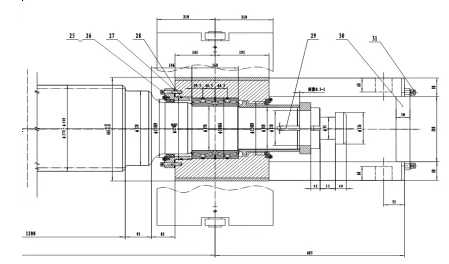
The transmission side and the operating side are single four-row tapered roller bearings, and the damaged position is the transmission side (fixed end). The bearings must bear both radial load and axial load generated during rolling during operation, and the transmission side bearings limit the two-way axial displacement of the shaft.
2. Bearing structure and characteristics
Four row tapered roller bearings consisting of two inner ring assemblies; An inner spacer ring; The inner diameter of the inner ring and the shaft are designed as a gap fit, and the outer ring and the aperture are transitional fit. This type of bearing can withstand a large combined load of radial and axial forces, and can generally be used alone on the roll system, without the need to configure positioning bearings. This feature is conducive to simplifying the structure and length of the roll during the design of the rolling mill roll system, but the assembly requirements are higher, and must first be installed in accordance with the installation sequence of the bearing identification, otherwise the internal clearance will change. Cause abnormal force and damage; Secondly, it does not have the ability of aligning itself, and is more sensitive to misalignment. Any misalignment will lead to the internal torque load of the bearing. Due to the axial force to be borne at the same time during operation, the axial force is assisted by the end face of the big head of the rolling body and the middle ring of the inner ring, and there is objective sliding friction, so the lubrication requirements are higher.
3. Bearing damage appearance
①The driving side of the work roll is burned
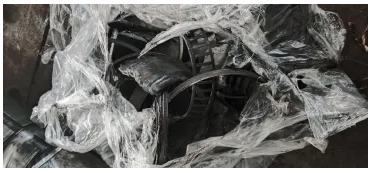
②One side liner of the work roll box falls off
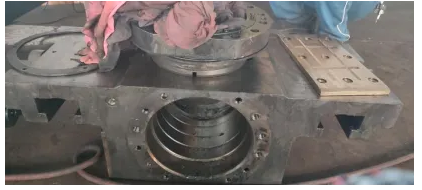
③Middle roller drive side burn
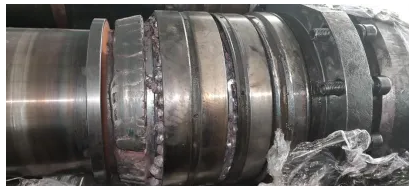
④The seal ring is broken, the spring is broken and missing
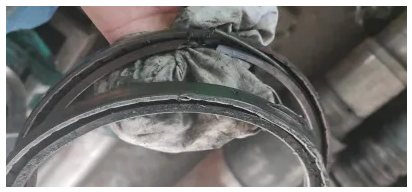
4. Summary analysis
Through understanding the site and participating in the disassembly, the reasons for the above analysis are as follows:
1.The work roller burn location is the transmission side, and is not fixed side, normal operation only bear radial load, do not bear the rolling axial load, and the burn bearing inspection there is a trace of bearing axial load, and from the above characteristics analysis of the bearing does not have the aligning performance, more sensitive to the wrong, any wrong will lead to the bearing internal torque load. Therefore, the analysis shows that the liner loosens off, the damaged torque of the drive shaft and the increase of vibration lead to the bearing burning.
2. The burn position of the middle roll bearing is the transmission side (fixed end). During the disassembly process, it is found that the outer gland seal is damaged, and the inner seal is badly damaged, and the internal spring is damaged and missing. It is judged that impurities enter the inside of the bearing, causing the rolling body to stick and eventually lead to the burning of the bearing;
5. Suggestions for improvement
Although four-row tapered roller bearings can meet the requirements of force and quick loading and unloading on site, due to the direct clearance between the inner diameter and the shaft, a bearing failure or burn will directly affect or damage the roll, so special attention should be paid to the following matters during use:
①bearing end match
Because the bearing does not have the aligning performance, after installation, it is required that the convex end face in the bearing box is parallel to the end face of the bearing outer ring, and the inner ring end face is parallel to the shaft shoulder end face. At present, the main problems are wear, damage and damage to the end face of part of the shaft shoulder. The large parallel difference after the inner ring contact leads to the axial force inclination of the bearing, causing the axial biased load of the bearing, resulting in abnormal wear and failure of the bearing.
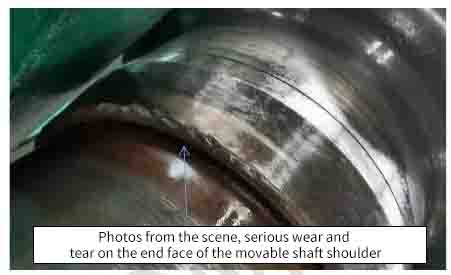
It is recommended to check the roller shoulder in use, and repair or replace the shoulder that is seriously worn, seriously damaged, or has raised points as shown in the above figure. At the same time, increase the interference fit between the shoulder and the roll to prevent the relative sliding friction between the shoulder and the roll.
②Axial locking gap
The bearing itself is reserved for axial clearance, after the bearing assembly, the locking sleeve is also reserved for axial clearance, too large axial clearance is also an important factor that causes the axial movement of the bearing to run unstable and lead to burning, so it is suggested that the minimum range of axial clearance between the sleeve and the locking nut is about 0.5mm. At the same time, ensure that the axial locking connection behind the roller is reliable.
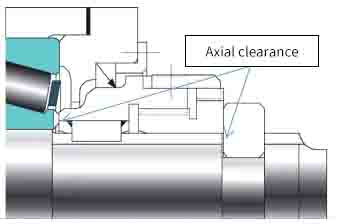
③Match the bearing inner diameter with the shaft
Sliding friction objectively exists because the inner diameter and shaft are interstitially fitted after bearing installation. Sliding friction is the main factor leading to the wear of roll diameter and shaft shoulder. Therefore, it is suggested that machining the inner diameter spiral groove on the inner diameter of bearing can effectively reduce and improve the wear between the inner diameter of bearing and roll diameter, and promote the stability of roll use.
④Check regularly
The lifting, jerking and vibration of the roller system are the main factors that cause the liner wear of the end face of the bearing box. Check the tightness of the bolt of the liner plate in time to ensure the reliability of fixing and prevent the liner wear, scratch aggravation or falling off caused by the loosening of the bolt.